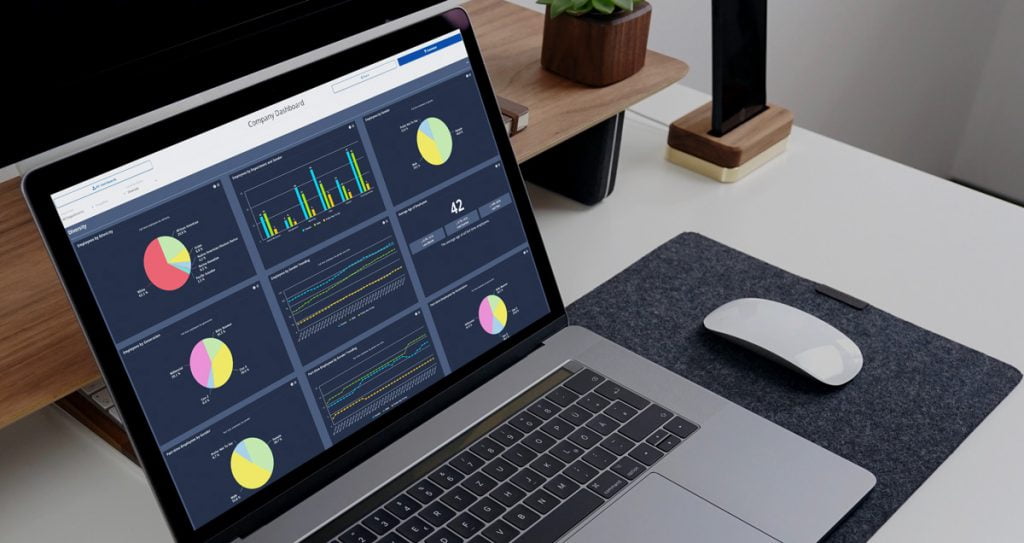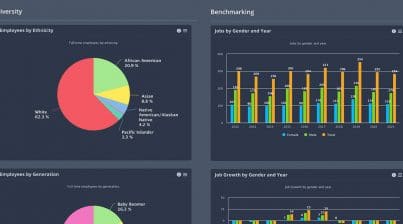According to the SHRM, around 80% of companies are simply “going through the motions” of diversity, equity, and inclusion (DEI) programs without “holding themselves accountable.”
For those companies, DEI initiatives are yet another tick list, items to cross off the perpetual company to-do, or worse, companies who look solely to profit from any investment in DEI initiatives via positive public perception or those who only create a program just to say they have one are all approaching the matter entirely incorrectly.
Any resulting good a DEI program will do for your company will be purely incidental as your team will see through any quick, under-thought-out approaches to DEI, increasing the damage in what is often already a precarious situation.
Good diversity, equity, and inclusion policies need to be well-planned with several stakeholders involved, including those that the program will impact. Here’s how to create sustainable diversity, equity and inclusion initiatives – the right way – and in a way that will benefit your company and your employees long term.
What are DEI programs?
DEI is a term used to describe programs and policies that encourage the representation and active participation of diverse groups in organizations. The “diversity” aspect often includes people of different genders, races and ethnicities, abilities and disabilities, cultures, ages, religions, sexual orientation, diverse backgrounds, experiences, and skills and expertise.
In a way, that term could include anyone, but overall, every company wants to create an inclusive environment for all employees, with special sensitivity to aspects of diversity (those that could be discriminated against), where employees feel valued, listened to, part of the team, properly compensated, and heard.
DEI is the expanded form of the old “diversity and inclusion” term to reflect the new focus of “equity” (i.e. fairness) in organizations.
But creating a DEI program and initiative should be seen as an opportunity to create better employee engagement, understand your employees and customers better, and to grow as a business – not simply a “feel-good” initiative to say you’ve done it and you have “something” in place.
Research demonstrates that having diversity in the workplace improves financial outcomes, team performance, innovation, creativity, and the overall success of a business so if you’re trying to come up with a business case for why diversity is an important metric to track, that’s it! As societally, we become more diverse companies that are chaired by an all-white-male -Ivy-League cast may find themselves left far behind as society now values inclusive business models to meet changing needs.
DEI programs, in short, are two parts of a strategy to have both a diverse workforce and an included workforce. DEI experts note that hiring “diverse” candidates is akin to asking someone to attend a dance. They’re at the dance. They’re in the room. But, the other side of the equation is the “inclusion” factor. There’s no point in having “diversity” in the workplace if they aren’t being asked to dance. In other words, no matter how diverse your workforce is (a checklist as it were), there’s no point unless your business isn’t listening to those diverse voices. When you hire people with diverse perspectives, you need also to make them feel included and be included in business strategy. Their voices need to be seen and heard and part of how things are run.
So, a good DEI policy promotes a diverse workforce and a diverse voice where you include people of ages, races, abilities, genders, religions, cultures, sexual orientations, etc in the conversation, in the room, as an integral part of the business. And these people also have to feel included and valued and that they’re treated fairly. So, how do you do that?
What is diversity training?
Well, often the first step of DEI is analyzing if your workforce is diverse. If it isn’t, recruit and hire for more diverse roles – but that doesn’t mean just filling roles and not developing those roles further. It’s a long-term process, after all.
Next, once your workforce is representative of the culture and your customer base, learning and development leaders need to work on creating an inclusive organizational culture.
The Center for Talent Innovation demonstrated that inclusive leadership and clear career paths for development are two “levers that drive inclusion.” It does no good if you just hire for diversity but those people don’t see a clear trajectory to develop their career in the ways they want, i.e. no promotion potential if they want it.
Finally, leadership training and performance management can make a big impact as can well-done diversity training. For example, if you have employees with disabilities you can train able-bodied employees to work well with those who are differently abled. You may have gender diversity training that helps employees understand each other rather than placing blame, which can improve gender inclusion. Continuous training, rather than one-and-done sessions, can help reduce unconscious bias in the workplace, improving organizational inclusion.
Why are DEI programs valuable in today’s work culture?
Since 2010, the racial and ethnic diversity of the US has changed. The white population has decreased 5.9% in the last ten years. Now, one in five children in public kindergartens is Latinx and children from racial and ethnic minority groups make up more than half of the school population, which means future workplaces will be more diverse. And as we are seeing more diversity now, DEI programs are not only valuable in today’s workplace culture; they’re vital.
Companies need to understand DEI, how to make these employees feel valued and part of the company culture, how to attract and retain these employees, and how to make them feel fairly compensated – as a way to future-proof their organization.
DEI initiatives have a foundation in social injustice that spills into the workplace. Creating and crafting inclusive programs should be driven by respect for the richness that these employees bring to your employee culture, your business objectives, the skillsets you can offer, the diverse opinions and solutions you can muster. These programs should not be driven by fear or pressure. In creating an effective program, you’re creating a workplace built on trust, belonging, and empathy, which is often the core of many businesses.
Often, though, when creating diversity programs – after recognizing the need for a program – companies want a quick-fix solution. They want something to work now. Or last week! But no DEI “solution” is a quick fix. It’s a process. You’re not slapping a Band-aid on a paper cut. You’re not fixing something so it “goes away.” These programs create healing in often ignored, underrecognized groups, often where there are wounds and gulfs to overcome that need more healing than a Band-aid can provide.
What makes DEI programs sustainable?
DEI programs are a journey where you will need to develop strong bonds with your employees, working towards solutions that feel inclusive and useful. Often companies will want to hire consultants, but, in this case, consultants don’t know your employees. Include your employees in an internal task force first, deciding what initiatives will work for them. What a consultant can come up with in a canned solution won’t necessarily work for your company and your diverse set of employees.
Before you begin your DEI program, conduct an assessment to evaluate your starting point. What’s your current culture? You can’t simply ask how employees feel about diversity in the company or if they think the company has a good DEI program, but you need to ask something more telling like “Did you feel you were able to contribute substantially to the XYZ project?” You need to ask questions that determine if employees feel a sense of belonging and value. Feeling they belong is part of a successful and sustainable DEI program.
A successful DEI initiative increases productivity since employees have a sense of belonging, commitment, and loyalty to your company. When they feel valued, they give value in return.
When working on a DEI strategy, you’ll also need to look to every stage of the employment lifecycle. Current employees can help get you started but you need to know how you’re working to attract diverse talent. Then, how are you onboarding these employees and are you making them feel included? Are you current employees, teams, and projects staffed with diverse perspectives? Do all employees have fair and accessible growth opportunities? Are your annual reviews fair? For former employees, do your exit interviews address negative trends and implement positive change?
Creative a sustainable DEI program will take time but assembling a team and beginning the process is the first step!
What do employees find attractive about DEI programs?
Diverse employees, current and future, find DEI programs attractive because it shows companies care about creating truly inclusive environments and will work to ensure that they are included, treated fairly, rewarded and compensated equitably, and valued in the organization.
But companies that simply use “big data” to meet DEI “requirements” are missing the mark. For example, if a company simply hires a large number of diverse candidates so they can say something along the lines of “We increased our hiring rate for people of color from eighteen percent to forty-eight percent over the last five years and we have 97% retention” aren’t really concerned about their diverse employees for the value and talent they bring to the organization. What positions did they hire for? Are any of these people of color in executive positions? What are these employees contributing – or allowed to contribute – to the organization? Are they major contributors?
Data is a wonderful thing but you have to do something with your data, interpretation and analysis, to see the full picture. Once you know your population is diverse, then you might want to consider how do you measure contribution? Do these employees feel a sense of belonging? Do they feel heard and seen?
For employees to find DEI programs attractive and valuable, stakeholders at every level of the organization from entry-level to CEO need to be involved in DEI, forming a bond of trust. It’s only then that DEI programs can be transformative for those who benefit from them – which is absolutely everyone and especially those who are often discriminated against knowingly or unknowingly with conscious or unconscious bias in organizations.
Here’s how to build the best DEI programs
Building the best DEI program means understanding your metrics and then interpreting those metrics correctly, actioning those metrics to create a fair, diverse, equitable, and inclusive environment for everyone in your business.
You’ll want to establish DEI success metrics for your organization. Analyze what that looks like. What’s your ratio of men to women, races to races, able-bodied to disabled, and so forth. How are you making your organization diverse at each level of the workforce – from your lowest to your highest-paid employee. What are your retention levels and employee satisfaction scores for these diverse groups? Are your customers satisfied? Are you known as being an inclusive organization?
The first step in building your program is building an all-in-one metrics dashboard that measures diversity in your organization. Employee Cycle can help with gathering your DEI data. Find out how with our free demo. All of your metrics in one place with real-time actionable data you can use.













